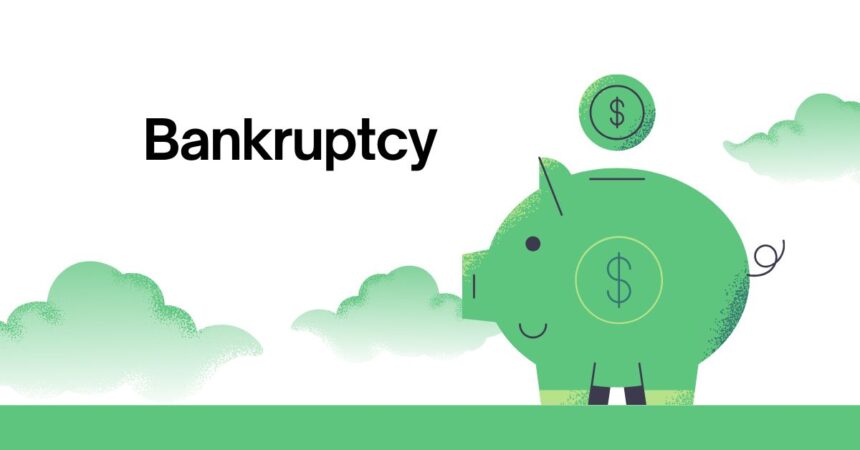Bankruptcy is a legal process that provides individuals or businesses facing insurmountable debt the opportunity to either reorganize or discharge their debts. It allows those in financial distress to get a fresh start, but it also involves significant consequences for the individual or business involved.
There are different types of bankruptcy, and the specific type will depend on the nature of the financial difficulties, the debtor’s goals, and the legal protections available. In the United States, the Bankruptcy Code offers several chapters, each designed for a particular type of debtor, such as Chapter 7, Chapter 11, and Chapter 13.
Key Takeaways
- Bankruptcy is a legal process that allows individuals or businesses to restructure or eliminate their debts.
- The main types of bankruptcy are Chapter 7, Chapter 11, and Chapter 13.
- Chapter 7 involves liquidation of assets, while Chapter 11 and Chapter 13 allow for debt reorganization.
- Example: A small business may file Chapter 11 to reorganize its operations and keep running, while an individual might file Chapter 7 to eliminate most of their debts.
Types of Bankruptcy
- Chapter 7 Bankruptcy:
Often referred to as “liquidation bankruptcy,” Chapter 7 is the most common form of bankruptcy for individuals. In this process, the debtor’s non-exempt assets are sold, and the proceeds are distributed to creditors. Afterward, most remaining unsecured debts (such as credit card debt) are discharged.- Advantages: Provides debt discharge quickly (usually within 3-6 months).
- Disadvantages: The debtor may lose assets that are not exempt under the law.
- Chapter 11 Bankruptcy:
Chapter 11 is primarily used by businesses to reorganize their debts while continuing operations. It allows companies to propose a plan of reorganization, which is subject to approval by creditors and the court.- Advantages: The company can keep running while restructuring its debts.
- Disadvantages: It can be costly and complex, requiring legal fees and court involvement.
- Chapter 13 Bankruptcy:
Chapter 13 is designed for individuals with regular income who can repay part of their debts over time. The debtor creates a repayment plan that lasts 3 to 5 years, during which they make monthly payments to creditors. Once the plan is complete, the remaining debts are often discharged.- Advantages: The individual can keep their assets (home, car) while paying off debt over time.
- Disadvantages: The debtor must have sufficient income to make regular payments.
Impact of Bankruptcy
While bankruptcy provides relief, it also has long-term consequences for the debtor:
- Credit Impact:
Bankruptcy has a significant impact on the debtor’s credit score and remains on the credit report for several years. Chapter 7 bankruptcy stays on the credit report for 10 years, while Chapter 13 stays for 7 years. - Asset Liquidation:
In Chapter 7, the debtor may lose some assets, but Chapter 11 and Chapter 13 generally allow the debtor to retain their assets as long as they adhere to the repayment plan. - Emotional and Social Impact:
Bankruptcy can be emotionally and socially challenging, as it often carries a stigma. However, it is a legal process designed to help individuals and businesses regain control of their finances.
Benefits of Filing for Bankruptcy
- Debt Relief: Bankruptcy provides debt discharge or debt restructuring, offering individuals and businesses a chance to start fresh financially.
- Automatic Stay: When a bankruptcy case is filed, an automatic stay is put into effect, which halts collection actions such as foreclosure, wage garnishment, and harassing calls from creditors.
- Protection from Creditors: Filing for bankruptcy can provide protection from aggressive creditors and lawsuits related to unpaid debts.
Example of Bankruptcy in Action
Imagine a small business that has fallen behind on its loan payments due to a decline in revenue. The business may file for Chapter 11 bankruptcy to renegotiate its debt and reorganize its operations. The business could continue operating while restructuring, and creditors could receive partial payment over time instead of the full amount they are owed. This process helps the business avoid closure while ensuring that creditors are paid.
Filing for bankruptcy is a difficult decision, but it can provide individuals and businesses a fresh start. Whether through Chapter 7, Chapter 11, or Chapter 13, bankruptcy allows debtors to restructure or eliminate debts and begin rebuilding their financial future. However, it’s essential to carefully consider the impact on credit, assets, and the long-term consequences before pursuing this option.





